Teaching Approaches
We differentiate the curriculum according to the learning styles and abilities of all our learners. Teaching approaches are adapted to enhance the opportunities for learners to access a broad, balanced and relevant curriculum.
Personalised Learning
All pupils are unique and learn in different ways. For this reason, every pupil at Newfield is supported in their learning in the way which is most appropriate for them. Some pupils will use visual support ( symbols / pictures ) in addition to spoken language to aid their understanding. Some pupils may experience learning opportunities through their senses; others may require technology ( communication aids ). Some pupils may need a structured approach with limited distractions; others may need regular movement breaks. We will always inform parents about the approaches that we use to engage your child and like to hear about how your child learns best at home. Below is a little more information about some of the approaches we use :-
Multi-Sensory Learning
Some pupils benefit from a multi-sensory approach to enable them to access learning and to enhance their understanding. Providing learning opportunities which engage all of the senses enables pupils to actively participate and develop their understanding of the world around them. For example; stories are not just read – they are brought alive by using sounds, smells, tastes, tactile objects, lights and movement. Pupils then begin to make the link between the spoken word or sound , texture, taste, and smell.
The multi sensory approach can also enable pupils to experience a wide range of stimuli which they may not encounter in their everyday lives eg feeling wet sand in their feet whilst listening to the sound of waves crashing and smelling the rich aroma of seaweed. We can create amazing environments within our sensory room provision. Pupils develop early communication skills and their ability to make choices by expressing their likes and dislikes of different sensory experiences. Some pupils have sensory impairments and this approach enables them to use and develop senses that are not impaired.
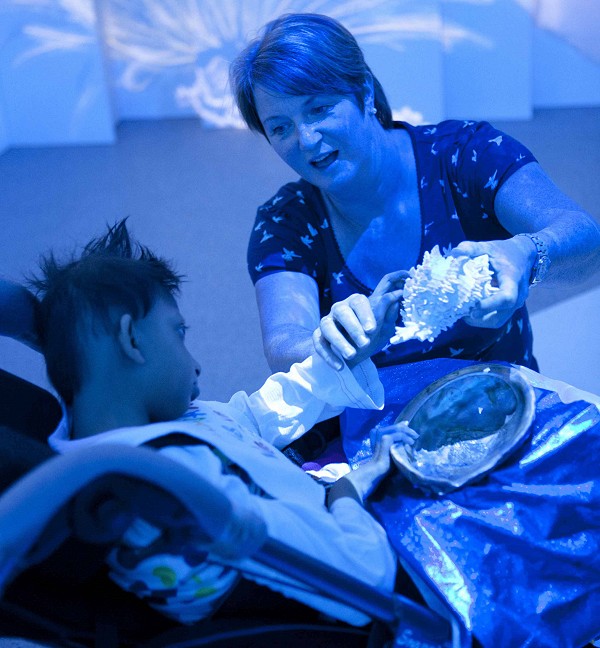
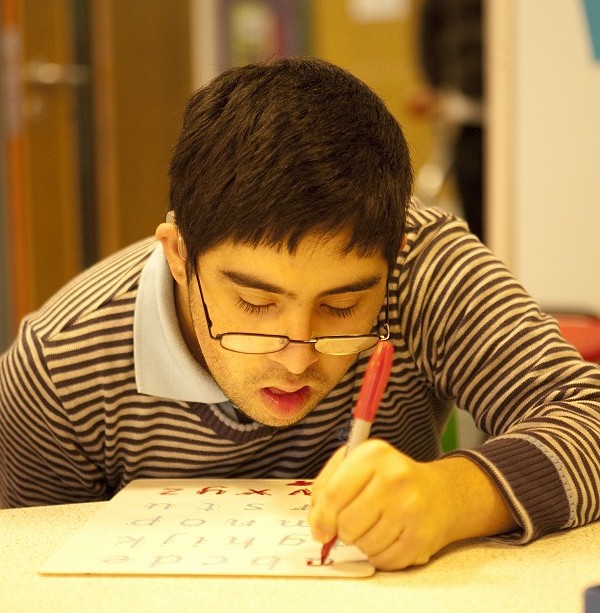
Structured Learning
Some pupils benefit from a structured programme which builds upon prior skills and knowledge. These pupils follow a more formal timetable and learn at their own pace. Work is set for each individual at the level that is appropriate for them. This may mean that in a maths lesson, some pupils will be learning to count objects and others may be adding up two groups of numbers. Learning opportunities will always be provided using the skills and knowledge that the pupil already has whilst challenging them to develop these further. Pupils have lots of opportunities to generalise skills throughout the day and in different lessons. So a child that is learning to read will be doing so throughout the day and not just during English lessons.
Autism Friendly Teaching
Autism-friendly teaching is a term used at Newfield School to indicate a set of approaches and a philosophy which we believe help pupils on the autism spectrum to access the best learning opportunities. Autism friendly teaching approaches are not specific named interventions (although they may draw from them) but rather a set of principles that Newfield adheres to in delivering education and care to pupils on the autism spectrum.
One of the approaches we draw from is TEACCH. This was developed in North Carolina, USA in 1960s and is based on the philosophy of capitalising of the strengths of learners with autism.
You can read more about this approach on the TEACCH website.
Visual Support
Many of our pupils, particularly pupils with autism, are visual learners and for this reason we promote the use of visual communication when teaching pupils.
According to the pupil’s level of understanding photographs, symbols or objects of reference are used for a variety of reasons:
to aid pupils’ understanding of what is expected of them to show pupils’ a sequence of events in the form of a timetable to break down a task to make clear the component parts (i.e. in the form of a visual scenario e.g. hand washing) ‘make a deal’ boards which visually demonstrate to a pupil in a visual way what they are working for and their progress towards achieving the reward ‘now and next’ boards; which is a portable way of showing pupils’ the activity or reward which will follow what they currently working on
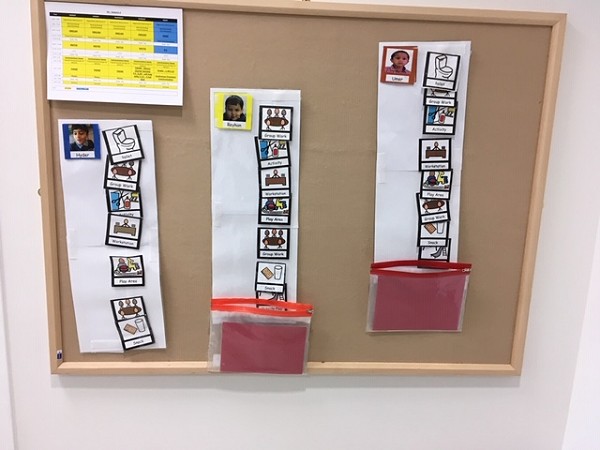
Environment
The classrooms in the learning environment are organised to provide clearly defined, purposeful areas.
There is consistency about the expectations of what should happen in these areas e.g. work areas are just for work.
Most classrooms will have these areas:
- group work area
- activity area
- communication area
- workstations
- play/ leisure area
There are ‘low distraction’ areas available in classrooms to enable pupils to have somewhere to work which will improve their ability to concentrate.
It may also be appropriate for there to be a ‘sensory respite area’ in the classroom which will facilitate pupils being able to manage their own sensory needs.
Some classrooms have areas of high stimulation, to support learners with specific impairments to work on sensory aspects of learning, for example, dark tents where visual tracking can take place.
Many learners gain their most useable information from visual communication and so environments are free from clutter and displays are clear and well organised.
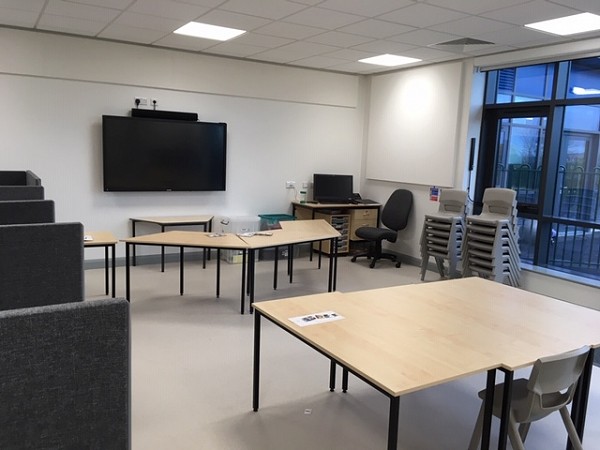
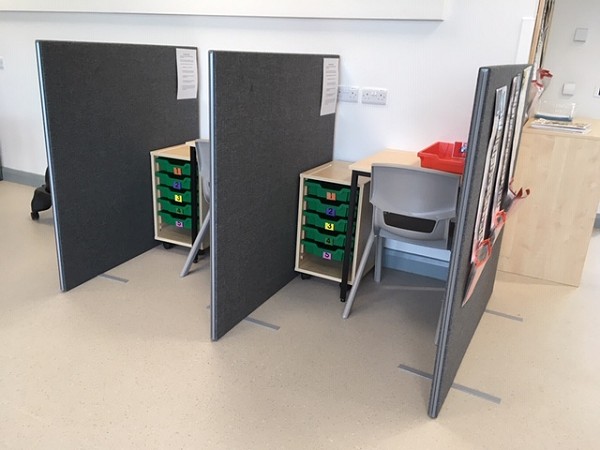
SCERTS (Social Communication Emotional Regulation Transactional Support)
SCERTS is an approach developed by Prizant, Wetherby, Rubin & Laurent in the USA in 2007.
At Newfield we draw from this approach by considering the development of communication as one of our fundamental goals.
A variety of strategies are used to promote the development of independent learning skills and functional, spontaneous communication.
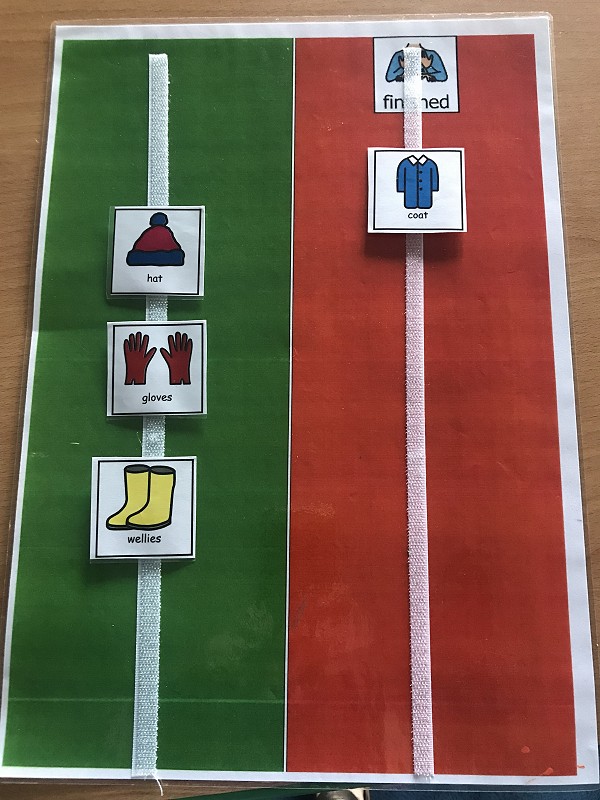
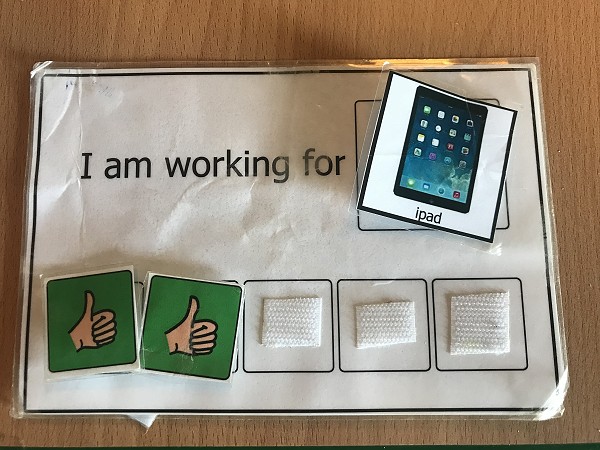
Motivation and Enjoyment
An essential part of effective learning is that the process is enjoyable, motivating, relevant and rewarding.
For many pupils, particularly those on the autism spectrum, sometimes what makes an activity or lesson enjoyable can be unusual, however this should be valued.
Pupils’ special interests are incorporated into lesson and activity delivery where possible, in order for them to be motivated to engage and learn.